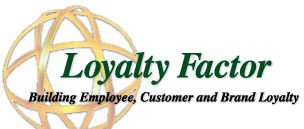The great thing in this world is not so much where we are, but in what direction we are moving. Oliver Wendell Holmes
Recruiter.com - 10 Critical Steps to Achieving Magnetic Leadership Part Two
![]()
Shala Marks | January 28, 2013 |
Check out what she had to say about her insight into what it takes to become a magnetic leader:
1. How did you develop your 10 Critical Steps to Achieving Magnetic Leadership?
Over the last 17 years of being in business, I’ve worked with companies of all sizes—35 people to 5,000 people. In all cases people within the organization wanted a clear, concise, and consistent vision of where the organization was going and what the plan of action was to get there. In many cases it became apparent that a vision statement was not enough. People really identify with the purpose of the organization and the values by which they were expected to behave. This, therefore, became the first critical step—developing and communicating the powerful trio of vision, purpose and values. The remaining nine steps followed a similar pattern of listening to employees and studying successful leaders and observing cultures that experienced great productivity and profitability.
2. What led you to create this list? Why is it significant?
People work best when they have steps or lists that they can check off and measure their results. Numbering items in a list creates a logical way for the brain to process information. I really wanted people to remember the steps so they can practice them.
3. Is there such a thing as a “best” leader? Or is successful leadership subjective?
I believe the leaders I have seen that are well respected and considered “the best” are individuals that are super energized and passionate. They can articulate their vision, purpose and values very simply so that people get it and can easily see it and support it. They become very engaged in the success.
Great leaders really have a contagious force that attracts people to them and their organization.
4. Your second step says leaders should identify their leader type. What resources can they use to discover this information?
There are various assessment tools that people can use. Meyers-Briggs is a very popular one, DISC is another, and I particularly like the I Speak because it helps people understand their behaviors under both favorable and stressful conditions, and it is amazingly accurate.
5. How have your 10 steps come into play with your role at Loyalty Factor? Do you struggle with any of the steps?
I practice all the steps in managing my Loyalty Factor business. The one step that can be a challenge is improving the most important things first. Sometimes I can get caught up in minor issues and forget the super important items. Keeping my future vision front and center and visualizing it helps me to keep on track.
6. Final thoughts?
I really feel I need to speak a little about trust. Trust is a foundation of great leadership; no one will follow someone if they do not trust him or her. And, in today’s world where leaders have to make continual changes, they need people that trust they are doing the best for the organization and their people. This comes with trust.
In order to build trust, leaders need to be consistent and straightforward in their conversations and behaviors and, most importantly and often forgotten, admit when they are wrong or have made a mistake. People really appreciate this and it makes the leader more human and more trustworthy.



